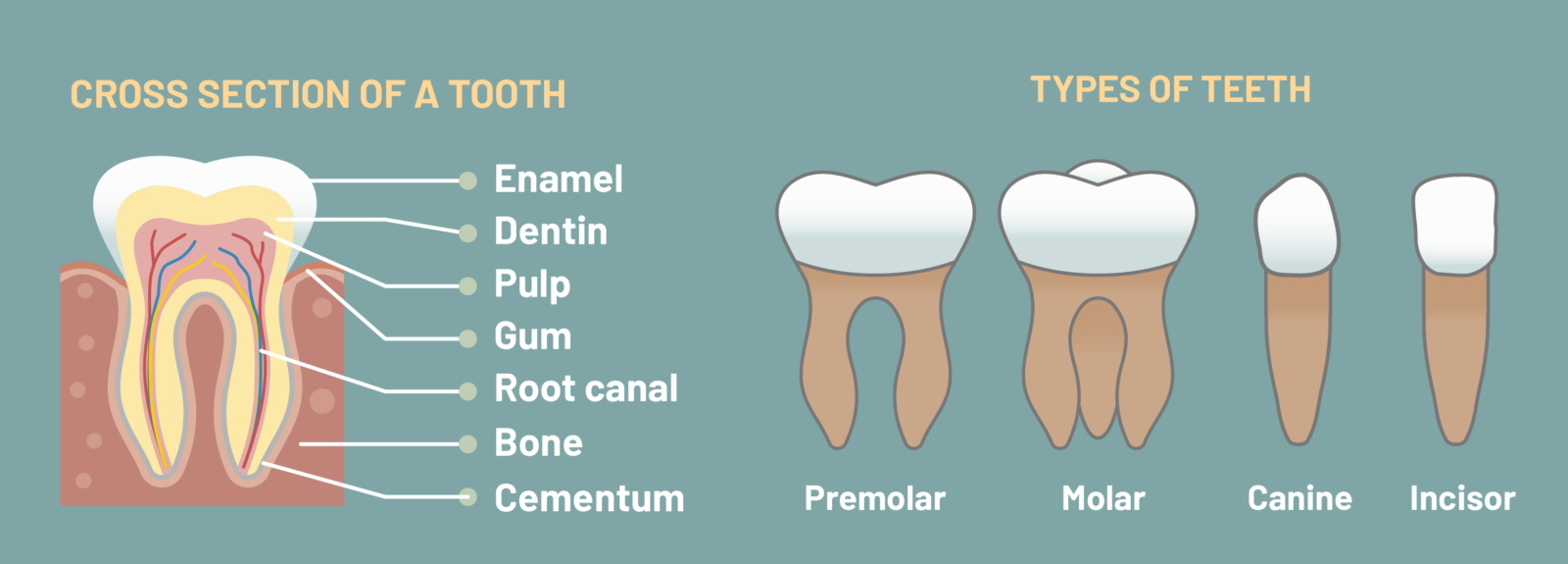
How to Spot Cavity Symptoms and Reduce Your Risk of Infection
Usually, healthy teeth are covered with tooth enamel, the hardest substance in the human body. However, tooth enamel can become damaged due to enamel erosion when exposed to acids in the mouth. The acids are found in foods and are also produced by bacteria in dental plaque. Dental plaque is a sticky biofilm that forms over teeth in between regular brushing and flossing.
Eventually, these acids will eat through the enamel, allowing a hole or cavity to begin forming in the tooth. When untreated, this can cause infection and toothache and may potentially lead to tooth loss.
Any breach in tooth enamel lets in these harmful bacteria, including small cracks or chips in a tooth that haven’t been mended. Dental cavities are also called caries or tooth decay, and despite improved dental care, they remain a global problem.
How Do Cavities in Teeth Develop?
It can take three years for a hole or cavity to form in the tooth enamel before it affects the inner part of the tooth. Once the tooth enamel is breached, the decay progresses into the dentine, the tooth’s inner layer. Dentine is much softer and more easily destroyed. During the next stage of decay, the cavity will reach the tooth pulp in the pulp chamber right in the centre of the tooth. The pulp consists of connective tissues, nerves and has a blood supply. The tissues of the pulp extend into the tooth roots in the root canals.
What are the Different Types of Cavity?
There are three different types of cavities that can form which are:
- Smooth surface cavity:
A smooth surface cavity slowly dissolves tooth enamel and eventually causes a cavity. This type of cavity is common in people in their 20s and can often form in the contact areas between teeth where it is difficult to clean thoroughly.
- Pit and fissure decay:
The chewing surfaces of your back teeth have intricate pits and fissures. These can be quite deep and tricky to clean thoroughly with a toothbrush. Consequently, decay is more common in these areas and especially during the teenage years.
- Tooth root decay:
This type of cavity can affect older adults where gum recession has occurred, exposing the tooth roots. Your tooth roots aren’t covered with tooth enamel and instead are covered with cementum, a softer material that is more easily brushed away and eroded. The exposed tooth root gradually becomes decayed as it is exposed to plaque bacteria, and acids. Tooth root decay is tricky to prevent and treat successfully.
Children are prone to developing cavities as their tooth enamel is slightly thinner. It is important to treat cavities in kids’ teeth to prevent them from being lost too early and prevent painful toothache.
What Are the Symptoms of Dental Cavities?
Signs of tooth cavities can vary tremendously, depending on the extent of the decay and the location on the tooth. Initially, a small cavity or tiny lesion in tooth enamel may not cause any symptoms. As the cavity becomes larger, it can cause various symptoms, including:
- Increased tooth sensitivity and especially when you eat or drink anything very hot or cold or sweet or sour
- Toothache that may be continuous or only occurs when you bite down
- Tooth decay can cause bad breath, or you may have a persistently nasty taste
- Severe tooth decay can cause an infection that results in facial swelling
- The gum around the affected tooth may look red, swollen and feel tender to touch
We are often asked, what does tooth decay look like? A tooth can have visible holes or cavities. The decayed tooth may develop white coloured lesions or black or brown stains.
Are You at a Higher Risk of Cavities? What Causes Tooth Decay?
Many factors can increase your risk of dental caries, and we’ve listed some of the major culprits below:
Poor Plaque Control
Dental plaque builds up over tooth surfaces continually, and it contains harmful bacteria that produce acids. These acids weaken tooth enamel, eventually causing lesions in tooth enamel that deepen into cavities unless promptly treated. A good oral care routine where you brush and floss regularly will remove most plaque, but dental plaque will continue to build up if you are lax about your oral care, and the bacteria within it will thrive.
Dietary Habits
Your diet makes a huge difference to your risk of tooth decay. For example, frequent snacking on sugary foods and junk like crisps and crackers provides the bacteria in dental plaque with the perfect food to thrive, producing harmful acids. The more often you eat these foods, the longer your mouth remains acidic and the greater the damage to your tooth enamel.
Dry Mouth
Saliva is a protective fluid produced by the salivary glands. It lubricates the mouth, helping to wash away excess bacteria and food particles and keeping the mouth clean and fresh between brushing and flossing. However, some people have a condition called dry mouth or xerostomia, where they cannot produce enough saliva. Consequently, the drier conditions allow bacteria to thrive, increasing the risk of dental disease, including tooth decay.
Ageing Dental Restorations
All dental restorations need replacing as they age because they can start to leak and crumble, letting in harmful bacteria that cause decay. Whenever you visit your dentist, you should always check the condition of your restorations carefully, making sure they can be replaced as necessary, continuing to protect your teeth.
Systemic Conditions
Sometimes people have systemic conditions affecting the immune system that make them less able to fight infections like tooth decay.
Treating Tooth Decay
When you have a cavity, health insurance will often cover part or all of the cost of filling the tooth.
There are several ways to treat tooth decay, depending on how far it has progressed, which also affects the cost of filling a tooth. For example, a small lesion in tooth enamel can sometimes be treated with a topical application of fluoride, which helps to re-harden the enamel, reversing the signs of enamel erosion. Deeper dental cavities will need a dental filling.
When you see your dentist, they can remove the decay and place a suitable filling material into the tooth. They can provide a range of different fillings including tooth coloured fillings made from composite resin, which are virtually invisible or use hardwearing amalgam, a silver-coloured material suitable for filling back teeth.
Deeper cavities that have reached the dental pulp will need a root canal. There are several things you need to know before you go. This procedure removes all the infection and decay and the dental pulp and tissues extending into the root canals in the tooth roots. Afterwards, your dentist can restore the tooth by filling it and covering the tooth with a crown.
Can You Eat After a Dental Filling?
A frequently asked question is “can I eat after tooth fillings?” The answer is yes, but it is best to wait until the anaesthetic has worn off completely as otherwise, you could bite the inside of your cheek if you eat something too hot.
What Happens to an Untreated Cavity?
An untreated cavity can become very painful and may develop into a dental abscess requiring emergency dental care. In the worst case, a severe abscess can be life-threatening. It can be much trickier to treat, and we may have no choice other than to remove the tooth. Once that has happened, you can look at getting a bridge or even an implant.
Preventing Tooth Decay
Although tooth decay is a common infection, it is preventable with proper oral care. Make sure you brush twice daily with fluoride toothpaste, and don’t forget to floss daily. Pay attention to your diet and try not to eat sweet and starchy foods between meals.
We strongly recommend regular checkups and hygiene appointments at Tandara Dental Centre so we can monitor your teeth for small lesions and can treat these before they develop into painful cavities. Dental sealants are a cost-effective preventive treatment, sealing the chewing surfaces of back teeth as these surfaces can often develop cavities.
We provide dental solutions to children and adults. Whatever your dental needs are, get in touch with Tandara Dental Centre today!










